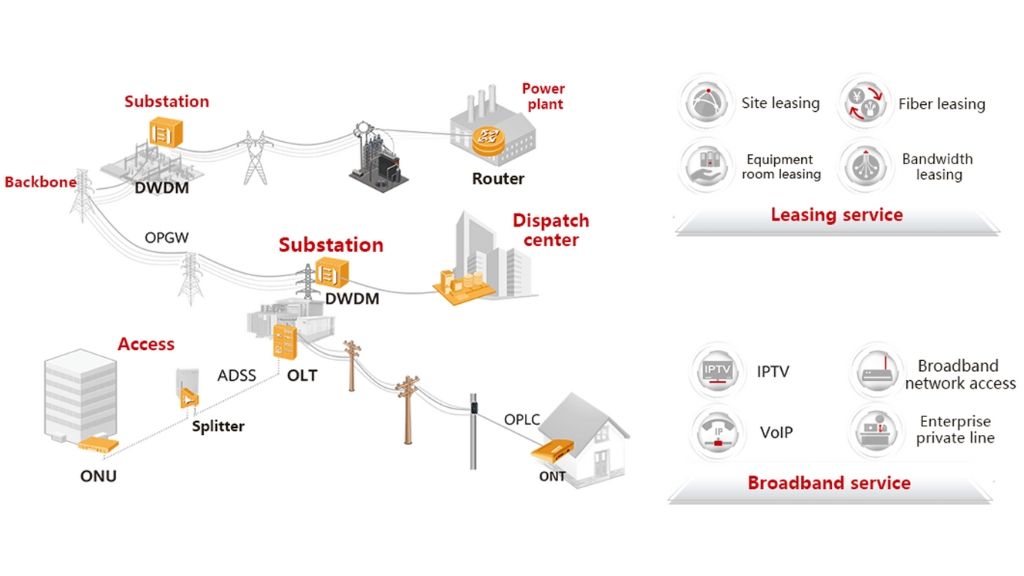Accelerating Indonesians’ Internet connectivity sustainably with PLN and Huawei
By Huawei
PT Perusahaan Listrik Negara (PLN), the state-owned provider of electric power throughout Indonesia, is working with Huawei to make high-speed broadband Internet a reality across the whole of Indonesia while accelerating energy transition in the world’s fourth most populous country. Its CEO, Darmawan Prasodjo, shares how.
 - NEW (2)-1684352607747.jpg)
Darmawan Prasodjo, CEO of PT Perusahaan Listrik Negara (PLN), the state-owned provider of electric power throughout Indonesia. Image: Huawei
PLN is leading the way for a nationwide fibre optic rollout that will provide broadband services to millions, says CEO Darmawan Prasodjo. The telecommunication and ICT service provider PT Indonesia Comnets Plus (ICON+), a subsidiary of PLN, is on a mission to deliver high-speed and affordable network access across Indonesia.
Fixed broadband penetration remains less than 20 per cent in Indonesia today, compared to over 55 per cent in neighbouring Malaysia and nearly 80 per cent in Thailand, said Prasodjo in an interview with Smart Energy World and Smart City World. Meanwhile, the World Bank states that almost all Internet users in Indonesia still rely on mobile broadband (what is commonly known as 3G and 4G/LTE) for internet connectivity.
But mobile broadband is much slower than fixed broadband with a capacity of merely 5GB of data per month as compared to fixed networks, which can carry over 200GB per month.
Among Indonesian homes with access to a fixed broadband provider, only 26 percent are subscribed to the service, the same World Bank article reported. The World Bank attributed this in part to quality concerns, with Indonesia recording the third slowest fixed broadband speed in ASEAN (after Cambodia and Myanmar).
Bringing broadband internet access to the masses
ICON+ hopes to change this through its fibre-to-the-home (FTTH) programme, which will see them growing ICT infrastructure to bring higher-speed broadband Internet to the masses. To do so, they are leveraging PLN Group’s existing infrastructure, namely 250,000 substations with broadband connections and more than half a million distribution transformers scattered all over the country.

Supporting ICON+ in their mission is Huawei’s Power Broadband Operation Solution, which allows them to expand the usage of assets that were previously used solely for electrical provision to other services like broadband network access.
Huawei's team of telecom experts and designers worked with PLN and rolled out an FOA (first office application) network solution. PLN chose Huawei's SingleFAN Pro, a one-stop solution that includes both devices and cabinets, to quickly deploy high-quality fibre infrastructure at a low cost.
Already, ICON+’s initiatives are bearing fruit. They have launched services and completed the market plan of developing 20 million lines within four years.
Beyond simply providing better Internet connectivity for Indonesians, ICON+ also hopes to build a digital society through the integration of more digital services into its offerings. For instance, ICONPay allows users to digitally process a refund for its services, as opposed to having to submit hardcopy documents. PLN Group also offers the PLN Mobile application, which allows users to check their electricity bills on the go.
The FTTH programme can support ICON+ in delivering such multi-service platforms for a cohesive digital society. Huawei’s FTTH solution uses one optical fibre network for multiple services, providing not just high-speed Internet access, but also Wi-Fi, voice, video and television services.
Accelerating the green transition
Besides expanding connectivity in Indonesia, PLN is also making significant strides in accelerating the country's energy. By partnering with Huawei, the company aims to leverage advanced network technologies to promote sustainable development of Indonesia’s energy sector while boosting efficiency, reducing costs and improving service quality.
At COP26, PLN declared its roadmap to achieve net zero emissions by 2060. To do so, it is looking to increase its renewable energy capacity to nearly a quarter of its power plant capacity by 2030, according to its 2021-2030 long-term electricity procurement plan. This will see the organisation reducing its carbon emissions by 1.8 billion tonnes over a 25-year span through investments in various sources of renewable energy including hydro, wind and solar.
Unavoidably, this transition to renewable energy will bring about greater fluctuation in energy access. To minimise this, the organisation is looking to digitalisation as a solution, partnering with tech providers like Huawei for smart solutions such as through their Advanced Metre Infrastructure to build the Smart Grids.
This will make electricity transmission more efficient and reliable, helping utilities operators to reduce operational costs, and consumers to maintain their consumption while reducing their electricity bills.
“We believe that by undergoing transformation and using digitalisation, PLN will continuously deliver green and smart energy bundled with internet and other value-added services to customers through its infrastructure and other competitive advantages,” Prasodjo says.
Learn how Huawei can accelerate connectivity through is electric broadband operations here.
